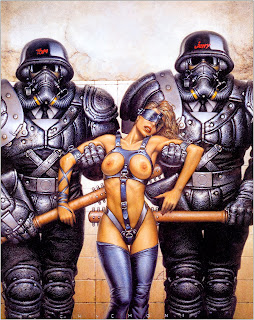
Paul Koudounaris is an author and photographer from Los Angeles. His charnel house and ossuary research and photos have made him a well-known figure in the field of macabre art, and he is a leading expert in the history of bone-decorated shrines and religious structures. He obtained a PhD in Art History from UCLA in 2004, with a specialty in Baroque-era Northern European Art. In 2006, he started extensively studying the use of human remains in religious ritual and as a decorative element in sacred spaces. He began writing about and photographing them for European newspapers such as The Prague Post, but in particular for magazines which specialized in the paranormal, such as the Fortean Times, including cover stories on sites in Europe, Asia, and South America. At the same time, he was compiling material for the first ever history of bone-decorated religious structures, visiting over 70 sites on four continents, some of which had never before been photographed or open to the public. He wrote two books about, full of stunning photographs.
The Empire of Death
In 2011, his research and photos were published by Thames and Hudson as The Empire of Death, the title taken from a caption at the Catacombs of Paris, one of the sites included in the book. The book included other famous ossuaries, such as the Sedlec Ossuary and the crypt of Santa Maria della Concezione dei Cappuccini, where he had been granted special permission by the monastery and Italian cultural authorities to photograph. A host of similar, previously unknown sites were also included in the book, however, and the text created a context for understanding the construction of these types of elaborate ossuaries as a Catholic phenomenon that was initiated during the Counter-Reformation.
Heavenly Bodies
His book Heavenly Bodies was released in 2013, and delved even deeper into study of obscure macabre art history by presenting the extraordinary story of a group of skeletons taken from the Roman Catacombs in the seventeenth century and completely decorated with jewels by teams of nuns. The book described how these extravagant cadavers, known as catacomb saints, were often mistakenly identified as Early Christian martyrs, then sent primarily to German-speaking lands where they were decorated and placed into Catholic Churches. Such skeletons are scarcely known nowadays, having been mostly removed and destroyed during the Enlightenment, but Koudounaris tracked down all the surviving examples and photographed them for the book. The title received a tremendous amount of press on its release, and Koudounaris was dubbed "Indiana Bones" by the UK press, in reference to his curious and macabre discoveries.





.jpg)















+(1).jpg)




























.jpg)



